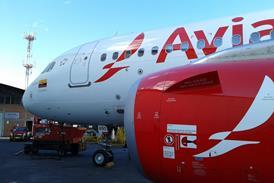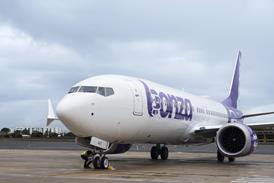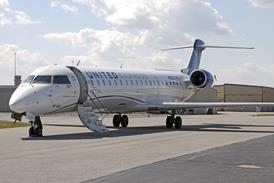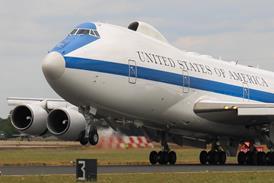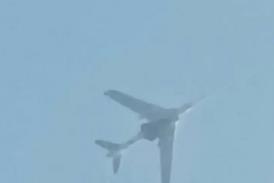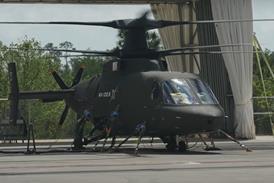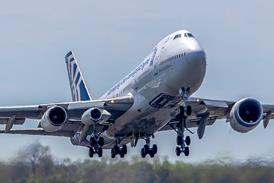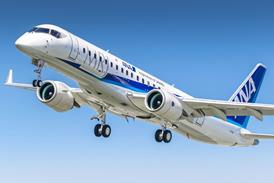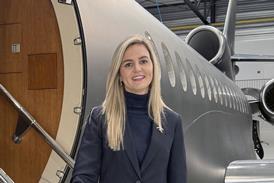China aims to one day complete an integrated air-defence network. In the meantime, it is expanding its airborne early warning capability to compensate
Nick Farina / London
China is one of the world's largest military powers and has vast areas of land and sea to defend. Unlike neighbouring Russia, however, China has never developed an integrated air-defence system linking early-warning and tracking radars, command and control centres, weapon systems and air bases into a unified, survivable national network. As a result, there is only a rudimentary, loosely organised air-defence system to protect Beijing, major cities and high-value targets, but the system has significant shortcomings and gaps in coverage.
Although the introduction of more modern and capable air-defence systems into the inventory of the Chinese armed forces is under way, development of a truly modern, integrated system remains a distant objective.
The air force is pursuing an airborne early-warning (AEW) capability to help offset these deficiencies. Over the past 10 years, the AEW requirement has been significantly expanded to encompass a control component (AEW&C) to vector fighters and a signals interception element to support related intelligence gathering.
Little is known about past and present Chinese AEW&C programmes, but it is clear the air force and local industry have long been involved in the development of appropriate air-surveillance radars, adjunct sensors and related mission support packages.
Known past efforts include the AP-1, a modified Tupolev Tu-4 Bull bomber, and use of the Shaanxi Y-8 (Antonov An-12 Cub) turboprop and abandoned Shanghai Y-10 four-jet airliner as potential AEW platforms. While the results are generally unknown, the fact that these programmes did not result in an operational AEW capability indicates they were probably not entirely successful.
In February 1993, the Chinese air force established the 932 project office to manage acquisition of an appropriate AEW&C platform. Following lengthy negotiations with several system providers, these efforts culminated in China's most recent failure involving Israel Aircraft Industries' (IAI) Phalcon system mounted on a Beriev A-50 (converted Ilyushin Il-76).
US pressure
The Israeli sale was terminated in July 2000 under US political pressure, setting back China's AEW&C procurement schedule at least another two years. More recent reports suggest the avenue now being pursued involves a small number of Russian-supplied A-50U/E Mainstay AEW platforms. An agreement with A-50 systems integrator Beriev is thought to have been concluded in 2001 and is expected to be implemented in two stages.
As a first stage, the air force is believed to have leased at least two downgradedA-50Us - Russia having previously leased two Mainstays to the Indian air force in 2000 for operational trials. The aircraft leased to China are believed to reside in Russia, with mission crew training under way.
A second phase would see the purchase of a small number of more advanced A-50Es in the near term. Sensors and systems for these platforms will be superior to those in the A-50Us, with expanded radar detection and tracking capabilities as well as other improvements. It is estimated that initial deliveries will be in 2004 or 2005.
At the same time, Chinese industry efforts to develop an AEW&C platform locally have been substantially reinvigorated and the government has placed a high premium on the success of these efforts. At least one air force programme appears to be under way: an unidentified sensor platform based on the Xian H-6D (Tupolev Tu-16 Badger) bomber. A small number of these considerably modified aircraft entered service in early 2000 to provide medium-range, high-altitude early warning and vectoring of air-defence fighters to targets. This may be a temporary solution and its current status is unclear.
A second programme uses a Y-8 transport, understood to have entered testing in January 2001. The primary sensor on this aircraft is an electronically steered phased-array radar housed in a rectangular fairing above the fuselage. The programme is likely to be experimental, possibly intended to support more sophisticated surveillance and control and sensor fusion requirements.
There are probably other Chinese programmes designed to support air force AEW&C needs, to help accelerate progress and strengthen national self-sufficiency.
Challenges remain
Although it is clear that China's AEW&C mission requirements are ambitious, key questions remain unanswered. Due to its limited experience in the operation of airborne surveillance platforms, a number of challenges remain to be overcome before the air force can employ these valuable, but limited, assets effectively.
In the short- to medium-term, three principal challenges will have to be overcome - mission crew training; development of a concept of operations; and operational efficiency, platform basing and product support.
The Chinese air force still does not appear to have established a major training programme or selected mission crews, a key enabler in the development of any useful AEW&C capability, although some personnel are being trained in Russia.
Moreover, the costs of developing this operational expertise are high and the lack of suitable sensors and systems in-country is likely to result in a deficient training syllabus for some operator functions. Failure to resolve this issue satisfactorily is likely to impede the development of local airborne surveillance and control expertise.
Some air force flight crews, however, may have been undergoing an initial instructor pilot course since the original A-50 airframe, lacking its Phalcon system, was delivered to China by IAI in June.
Since procurement and operation of AEW&C platforms is expensive, an important requirement is to establish a minimum number of annual flying hours for air controllers and, importantly, for air-defence fighter pilots who will work closely with the AEW&C teams. Analysis of annual average Chinese air force flying hours in recent years, however, shows a comparatively low time compared with their Western counterparts. With typical AEW&C missions lasting 6-9h, higher than average annual flying times would be expected.
Logging a consequential number of flying hours is unprecedented in the Chinese air force, yet will be essential if air control and fighter crews are to build appropriate experience within a relatively short time. The ability to build experience quickly will be constrained by the need to contain the operating costs of AEW&C platforms, which can quickly escalate to prohibitive levels.
Basing is another critical issue and a factor which must be confronted at the outset of the programme. China will have to decide early on whether the aircraft will perform strategic or tactical surveillance missions, or both. Addressing this will help determine whether a support facility should be built at an existing air base, or whether a new logistics centre will yield greater long-term benefits. It is unclear whether Chinese air force planners have resolved this question.
Support issues
Securing the necessary product support for the platforms and their specialised sensors and systems will also pose considerable challenges, particularly as operators of Russian equipment have often complained of poor support. As AEW&C operational costs are high, careful estimation of logistical requirements will be required, based on projected flying hours, sortie rates and module failure rates. Assuming some deployments of A-50s to forward locations, related support will have to be pre-positioned.
While China's plans to acquire a capable AEW&C platform have been well publicised, some of the A-50's technical capabilities are probably below its desired specifications. As a result, long-term operational challenges are likely to focus on improving radar performance and sensor fusion, while simultaneously reducing vulnerability to electronic attack; upgrading computers and communications; raising human endurance levels and reducing operator workloads; and improving mission planning and developing advanced tactics.
Source: Flight International

